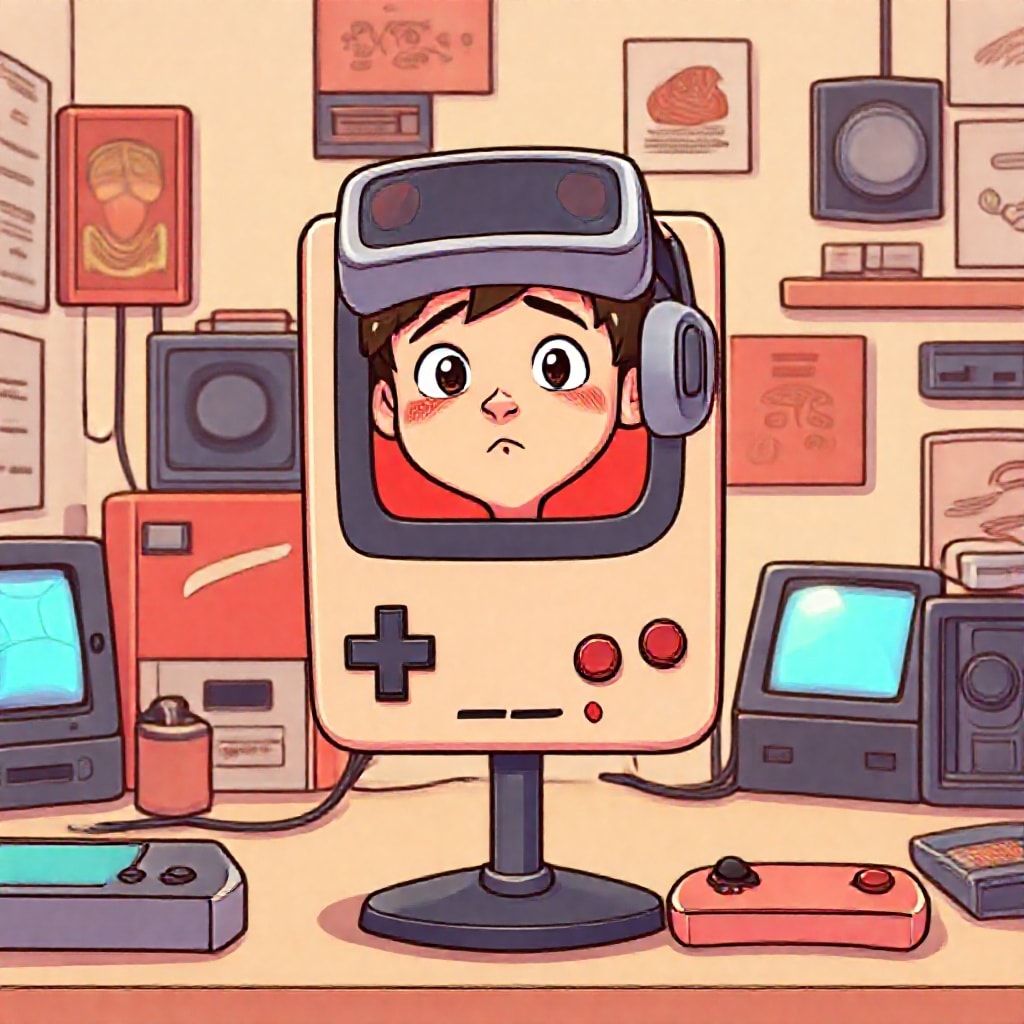
Remember a time when virtual reality felt like something out of a sci-fi movie? Clunky headsets, pixelated worlds, and the ever-present threat of motion sickness were the hallmarks of early VR. Fast forward to today, and VR gaming has exploded from a niche curiosity into a vibrant, rapidly expanding segment of the entertainment industry. It’s no longer just for tech enthusiasts; it’s for everyone seeking a new level of immersion and excitement. But how did we get here? Let’s take a deep dive into the incredible journey of VR gaming, from its humble, often awkward, beginnings to its current mainstream glory.
The Nascent Seeds: Early Forays into Virtual Worlds
The concept of virtual reality isn’t new. Its roots stretch back decades, with visionaries dreaming of fully immersive digital experiences. Early attempts, however, were often more conceptual than practical. Think of Morton Heilig’s Sensorama in the 1960s, a mechanical device offering a multi-sensory experience, or Ivan Sutherland’s “The Ultimate Display” in the late 1960s, which featured a head-mounted display so heavy it had to be suspended from the ceiling. These were groundbreaking ideas, but far from consumer-ready.
The 1990s saw the first significant push for VR in gaming, albeit with limited success. Sega’s VR headset, though never released, garnered significant hype. Nintendo’s Virtual Boy in 1995, however, became a notorious example of “too much too soon.” With its monochromatic red display, uncomfortable design, and tendency to induce eye strain and headaches, it was a commercial failure that cast a long shadow over VR’s potential for years. Arcade machines like Virtuality offered glimpses of interactive 3D worlds, but they were expensive, bulky, and mostly offered novelty rather than deep gameplay. The technology simply wasn’t ready for the grand ambitions of its creators.
The Rebirth: Consumer VR’s Triumphant Return
For a long time, VR remained a fascinating concept relegated to research labs and expensive simulation centers. But then, in 2012, a game-changer emerged: the Oculus Rift. Founded by Palmer Luckey, a young enthusiast, and brought to prominence through a wildly successful Kickstarter campaign, Oculus promised to deliver true VR to the masses. This wasn’t just a technological leap; it was a cultural shift, reigniting the dream of immersive digital worlds that felt truly real.
The acquisition of Oculus by Facebook (now Meta) in 2014 for an astonishing $2 billion signaled to the world that VR was no longer a fringe pursuit. It was a serious investment. This era saw the release of the first wave of modern consumer VR headsets: the Oculus Rift CV1, the HTC Vive (developed with Valve), and later, the PlayStation VR. These devices, while still requiring powerful PCs or consoles, offered unprecedented levels of immersion with high-resolution displays, wide fields of view, and sophisticated tracking systems that allowed users to move and interact within virtual spaces.
Key Technological Leaps
The success of this new wave of VR was underpinned by several critical technological advancements. Displays moved from low-resolution, slow-refresh-rate panels to high-definition, low-persistence OLED screens, drastically reducing motion blur and improving visual clarity. Head tracking evolved from simple rotational tracking to full 6-degrees-of-freedom (6DoF), allowing users to move freely in physical space, which was then mirrored in the virtual world. Controllers became more intuitive, moving beyond simple gamepads to hand-held devices that tracked individual hand movements, enabling natural interaction with virtual objects – picking them up, throwing them, and even gesturing.

Breaking Barriers: The Content Explosion
While the hardware was impressive, it was the software – the games themselves – that truly propelled VR into the mainstream. Early VR games were often tech demos or short experiences, showcasing the potential but lacking depth. However, as developers gained experience and the user base grew, truly groundbreaking titles began to emerge, proving that VR could offer unique, compelling gameplay experiences simply impossible on traditional flat screens.
Iconic VR Titles that Defined the Genre
- Beat Saber: This rhythm game, where players slash at incoming blocks to the beat of music, became a phenomenon. Its intuitive gameplay, high replayability, and sheer fun factor made it a must-have for any VR owner and an excellent introduction for newcomers. It’s arguably the VR equivalent of Wii Sports – simple, addictive, and universally appealing.
- Resident Evil 7 VR: This title proved that VR could enhance established genres, transforming a terrifying horror game into an intensely personal and visceral nightmare. The immersion made every jump scare more potent, every creak more chilling.
- Half-Life: Alyx: Released by Valve, a titan in PC gaming, Alyx wasn’t just a great VR game; it was a triple-A masterpiece that redefined expectations for what VR gaming could be. With unparalleled environmental interaction, deep storytelling, and polished gameplay, it was hailed as a system seller and a benchmark for future VR titles.
Untethered Freedom: The Rise of Standalone Headsets
Perhaps the most significant leap towards mainstream adoption came with the introduction of standalone VR headsets like the Oculus Quest (now Meta Quest) series. These devices eliminated the need for expensive gaming PCs or consoles, offering a completely self-contained VR experience. With inside-out tracking (meaning no external sensors required) and a relatively affordable price point, the Quest line opened VR up to a much broader audience. Suddenly, anyone could jump into a virtual world with minimal setup, making VR more accessible than ever before.

Mainstream Momentum and the Road Ahead
Today, VR gaming is firmly entrenched in the mainstream. Meta continues to lead with its Quest line, Sony has released the PlayStation VR2, offering a high-fidelity experience for console gamers, and Valve’s Index remains a top choice for PC VR enthusiasts. Major game studios are increasingly investing in VR titles, and the independent developer scene is thriving, constantly pushing the boundaries of what’s possible.
Accessibility and Affordability
The price of entry has steadily decreased, with standalone headsets offering excellent value. This, combined with a growing library of diverse games, from fitness apps like Supernatural to social experiences like VRChat, has broadened VR’s appeal far beyond traditional gamers. VR arcades have also popped up globally, offering a taste of high-end VR experiences without the upfront investment.
Beyond Gaming: VR’s Expanding Influence
While gaming remains a primary driver, VR’s influence is expanding into various sectors. It’s used for professional training (surgeons, pilots), educational experiences (virtual field trips), social interaction (metaverse platforms), and even therapeutic applications. This cross-pollination of technology and application further solidifies VR’s position as a transformative medium.
Challenges and the Future Horizon
Despite its impressive growth, VR still faces hurdles. High-end PC VR setups remain costly, and motion sickness is still a concern for a segment of users, though advancements in hardware and software have significantly mitigated it. The content library, while growing, still needs more “system sellers” to consistently attract new users. Battery life on standalone headsets is also a limitation.
However, the future looks incredibly bright. We can anticipate further improvements in display technology (higher resolution, wider FOV, varifocal lenses), more advanced haptics for a greater sense of touch, and even more seamless integration with mixed reality (MR), blurring the lines between the physical and virtual worlds. As processing power increases and costs continue to fall, VR is poised to become an even more integral part of how we play, learn, work, and connect.

Conclusion
The journey of VR gaming from a clunky, often disappointing niche to a mainstream entertainment powerhouse is a testament to persistent innovation and unwavering vision. What once felt like a distant dream is now a vibrant reality, offering unparalleled immersion and new ways to experience digital worlds. As technology continues to evolve and creators push the boundaries of what’s possible, the VR gaming revolution is only just beginning. So, strap on a headset, step into another world, and be part of the next chapter in this incredible story.






